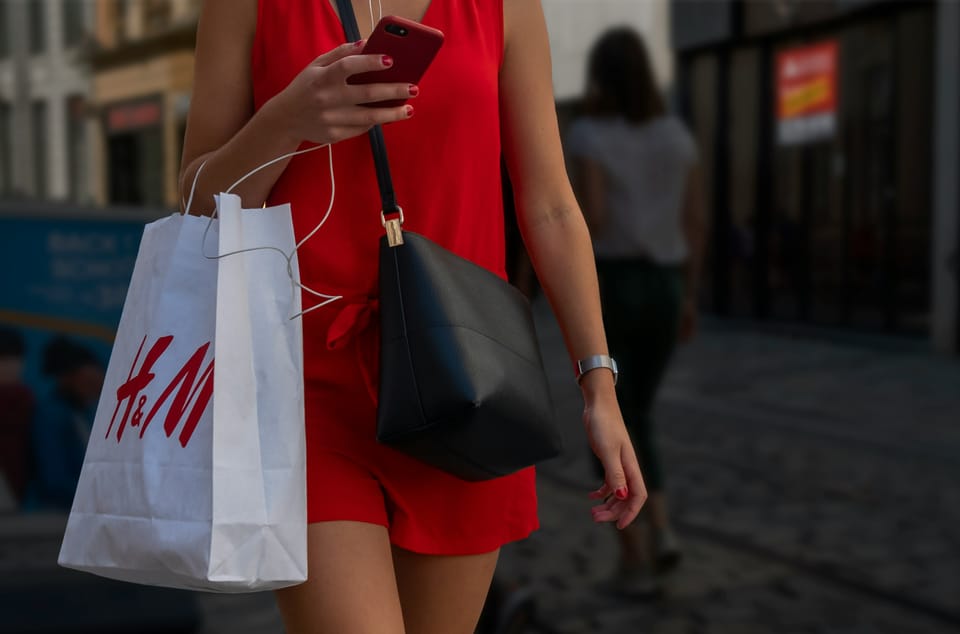H&M improves data accuracy – and adds nearly 2 million tonnes of emissions to estimates

H&M made a number of data and greenhouse gas emissions calculation improvements over the course of 2023 – almost all of which led to an increase in previous estimates, with almost 2 million tonnes added to its 2022 carbon footprint.
In its 2023 sustainability disclosures, published today alongside its annual and sustainability report, H&M details several initiatives taken last year to improve data accuracy, and reveals that many of its previous figures were underestimated.
Revised 2022 carbon footprint
For instance, raw materials emissions for 2022 increased by 74% or 510,000 tonnes when the fashion group “improved the data used for product weights and updated the factor used for some of [its] major material sources”. This new calculation methodology also affected use phase emissions, which increased by 28%, of 409,000 tonnes.
Similarly, upstream emissions from suppliers’ energy use increased by 732,000 tonnes of CO2e when H&M improved its coverage, and overall emissions from fabric production processes went up by more than 1.5 million tonnes (53%) as the group switched from emission factors to more granular energy needs for each production step.
2022 packaging emissions estimates also increased as a result of a new accounting methodology, and only garment manufacturing emissions were revised downwards (by 237,000 tonnes) due to data calculation allocation improvements.
When comparing this year’s sustainability data with that published in the company’s 2022 disclosures, the overall increase in H&M’s 2022 carbon footprint as a result of better data and methodology adjustments amounts to more than 1.8 million tonnes.
These adjustments suggest others in the industry may also be underestimating their climate impact by millions of tonnes of greenhouse gases due to poor data accuracy.
Changes in baseline estimations
H&M, which posted net sales of more than €20.4 billion in 2023, says it has applied these calculation changes to historical results, including its 2019 baseline, upon which progress towards its science-based targets is measured. The brand’s Scope 1 baseline changed from 17,062 tonnes to 23,024 tonnes, while Scope 3 went from 6.1 million to more than 8.8 million tonnes of emissions – a 2.7 million-tonne increase in overall baseline carbon footprint.
Recalculating baseline emissions is a common and necessary practice in ensuring carbon values are compared like-for-like. The SBTi states that base-year emissions should be restated if shifts in data or methodology prompt a change of 5% or more in the overall number. In H&M’s case, the baseline estimation has increased by 44%.
Acceleration in H&M’s progress against targets
Partly as a result of these methodology adjustments, H&M reported significant progress towards its SBTi in 2023: a 29% reduction in Scope 1, 21% in Scope 2 (where the baseline remained unchanged), and 22% in Scope 3, putting it on track to meet its 56% reduction target by 2030, as validated by the Science-Based Targets initiative. (Last year, H&M had only achieved a 7% reduction in Scope 3 compared to its baseline.)
The company attributes these results to “ongoing efforts, including investments in recycled and sustainably sourced materials for garments and packaging, energy efficiency improvements and a shift to cleaner energy sources in our supply chain as well as decreased stock-in-trade”, adding that emissions per revenue went down 13% between 2022 and 2023.
Indeed, H&M’s products are now made of 85% recycled or sustainably sourced materials, including 25% recycled materials. The group has also been hailed for its transparency efforts, having disclosed its full list of suppliers – something competitor Inditex appears reluctant to do.







Member discussion